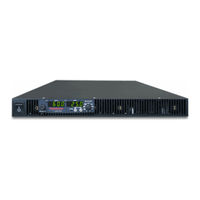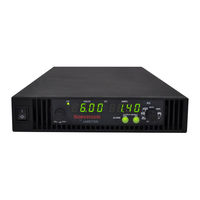Ametek Sorensen XG 100-8.5 Manuals
Manuals and User Guides for Ametek Sorensen XG 100-8.5. We have 2 Ametek Sorensen XG 100-8.5 manuals available for free PDF download: Operating Manual
Ametek Sorensen XG 100-8.5 Operating Manual (399 pages)
XG Family Programmable DC 670 Watts – 1700 Watts
Brand: Ametek
|
Category: Power Supply
|
Size: 9 MB
Table of Contents
-
-
Introduction
21-
Front Panel25
-
Installation
31 -
-
Introduction48
-
-
-
-
Introduction102
-
-
-
Remote Operation
133-
Introduction134
-
-
-
Data Format153
-
End of Message153
-
Hyperterminal153
-
-
Status Byte164
-
-
Save and Recall203
-
-
-
Introduction208
-
-
Ethernet241
-
Usb242
-
Rs232 (Serial)250
-
-
System Commands259
-
Subsystem Syntax259
-
-
Lxi Compliance262
-
-
-
Introduction266
-
-
Gain Calibration270
-
-
-
Gain Calibration271
-
-
-
-
User Diagnostics289
-
-
-
-
Error Messages332
-
-
-
-
Model345
-
-
-
-
Introduction372
-
Advanced Section387
-
Index397
-
-
Advertisement
Ametek Sorensen XG 100-8.5 Operating Manual (282 pages)
850 Watt Programmable DC Power Supply
Brand: Ametek
|
Category: Power Supply
|
Size: 1 MB
Table of Contents
-
Introduction21
-
Front Panel24
-
Installation29
-
Ventilation32
-
Load Wiring34
-
Introduction44
-
Introduction94
-
Remote Operation127
-
Introduction128
-
Data Format143
-
End of Message143
-
Hyperterminal143
-
Status Byte154
-
Reset Command178
-
Save and Recall195
-
Introduction200
-
Gain Calibration204
-
Gain Calibration205
-
User Diagnostics224
-
Using Queries231
-
Common Commands232
-
Parameter Types233
-
Error Messages263
-
Query Error List268
-
Remote Operation272
-
Index279

